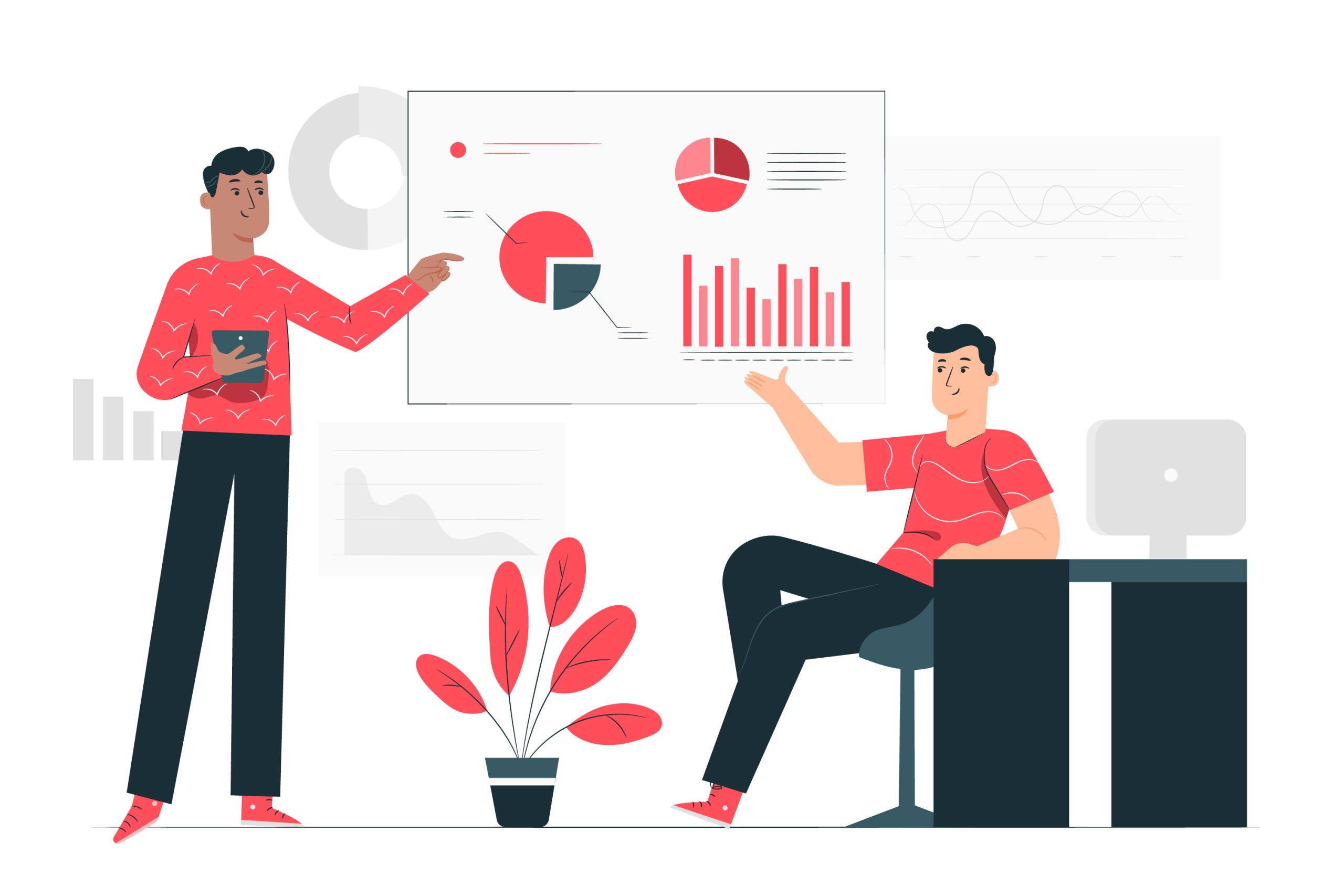Data Analytics and Data Science are interchangeable in today’s data-driven world. This article aims to clarify the similarities and differences between Data Analytics and Data Science, exploring their unique roles, methodologies, and applications. This guide provides you with details to understand how both are valuable in their own right with various benefits to offer. Check out the Top Engineering College in Bangalore to get a detailed curriculum in Data Analytics and Data Science to opt for a better future with diverse career prospects.
What is Data Analytics?
Data analytics involves examining historical data to uncover insights, identify patterns, and support the decision-making process. This process focuses on interpreting the data and provides actionable information to understand the business better by analyzing past performance and making informed decisions for the future.
- Data Analytics performs historical analysis to understand the trends and outcomes. Data Analytics follows techniques such as descriptive statistics, data visualization, and exploratory data analysis.
- Reporting, performance tracking, and operational improvements are the applications used by Data Analytics.
- Excel, SQL, and analytics platforms like W and Power BI are the common tools used in the course of data analytics to understand data and interpret it.
What is Data Science?
Data science is a multidisciplinary field with a combination of machine learning, algorithms, and statistical methods to analyze data and predict future trends. Data science extracts meaningful insights from large and complex data sets to provide data-driven solutions and proactive decision-making.
- Data science uses predictive modeling to forecast future outcomes using statistical models and machine learning algorithms.
- Machine learning, predictive analytics, data mining, and advanced statistical methods are the techniques used by data science.
- Data science develops applications such as predictive models, recommendation systems, and automated decision-making tools.
- Python, R, Hadoop, and machine learning libraries like TensorFlow and script learning are the common tools used by data science.
Key Differences Between Data Analytics and Data Science
The following are the key differences between Data Analytics and Data Science which explain the vital takeaways from each faculty.
| Differences | Data Analytics | Data Science |
| Objective | Understands and interprets the historical data to inform business decisions and improve performance. | Builds predictive models and algorithms to forecast future trends and generate insights from large and complex data sets. |
| Scope | Summarizes past data with descriptive analysis and generates reports to reflect historical performance. | Involves exploratory data analysis, statistical modeling, and machine learning to predict future outcomes and data-driven solutions. |
| Skills | Data interpretation, report generation, and statistical analysis with proficiency in tools for data visualization are the required skill sets. | Programming, machine learning, and statistical modeling with skills in handling large and complex data sets and building predictive models are the skills required. |
| Techniques & Tools | Techniques – Descriptive statistics, data visualization, and reporting. Tools – Excel, SQL, and BI platforms like Tableau. | Techniques – Machine learning, predictive analytics, and data mining.Tools – Programming languages like Python, and R and frameworks such as TensorFlow. |
| Data Type | Works with structured data, focusing on well-organized datasets in tabular formats. | Focuses both structured and unstructured data, including text, images, and big data from diverse sources. |
| Decision-Making | Decision-making is based on historical data and current trends. | Provides insights and predictions that influence decision-making by anticipating future trends, outcomes, and behaviors. |
Career Paths in Data Analytics and Data Science
Data Analytics Careers
| Career Paths | Skills | Recruiters |
| 1. Data Analyst Analyzes historical data to identify trends and provide actionable insights. | Proficiency in SQL, Excel, and Data Visualization tools. | Healthcare Providers, Financial Institutions, and Big Corporations. |
| 2. Business Intelligence Analyst Develops and manages BI solutions to support the decision-making process. | Expertise in BI tools, data modeling, and reporting. | Government agencies, consulting firms, and tech companies. |
| 3. Operations Analyst Focuses on optimizing the operational processes and improves efficiency through data analysis. | Proficiency in improvement methodologies like data analysis and project management. | Logistics firms, service industries, and manufacturing companies. |
| 4. Quantitative Analyst Uses statistical and mathematical models to analyze the financial data and support investment decisions. | Proficiency in advanced statistics, programming languages, and financial modeling. | Investment Banks, Financial Institutions, and Hedge Funds. |
Data Science Careers
| Career Paths | Skills | Recruiters |
| 1. Data Scientist Develops models and algorithms to predict future trends with complex datasets. | Proficiency in Machine Learning, Statistical Analysis, and Programming Languages. | Tech Companies, Research Institutions, and Startups. |
| 2. Data Engineer Builds and maintains data pipelines, ensuring data infrastructure that supports analytical needs. | Proficiency in SQL, Data Warehousing, and Big Data Technologies. | Large Corporations, Tech Companies, Startups, and Cloud Service Providers. |
| 3. Machine Learning Engineer Designs, Implements, and Maintains the Machine Learning Systems and Models. | Machine Learning Frameworks, Programming Languages, and Data Processing. | Tech Giants, AI-Focused Companies, and Research Labs. |
| 4. Research Scientist Conducts advanced research to develop new algorithms and methodologies for data analysis and better decision-making. | Proficiency in Advanced Statistical Methods, Programming, and Research Methodologies. | Academic Institutions, Tech Companies, and Research Organizations. |
Skills and Tools for Data Analytics vs. Data Science
Understanding the differences in skills and tools helps you to choose the right career path or develop the necessary expertise for each field. Both remain crucial for business and tie insights and operational efficiency with the necessary skills and tools. The following are the skills and tools for Data Analytics and Data Science.
Data Analytics
Statistical Analysis – Understand descriptive statistics and data interpretation.
Database Management – Proficiency in managing and querying databases using SQL.
Excel Proficiency – Advanced skills in using Excel for data analysis reporting and formulating.
Data Visualization – Ability to create charts graphs and dashboards to configure and represent the data.
Business Acumen – Understand the business processes and how data insights impact decision-making.
Tools:
- Excel for analysis, visualization, and data manipulation.
- SQL for querying databases and extracting relevant data.
- Google Analytics for web analytics and tracking online performance.
- SAS for advanced analytics and business intelligence.
- Tableau or Power BI for creating interactive dashboards and visualizations.
Data Science
Programming – Proficiency in programming languages such as R, and Python for data analysis and manipulation.
Statistical Modeling – Knowledge of advanced statistical modeling for predictive analytics.
Big Data Technologies – Expertise in tools and platforms for handling large and complex data sets.
Machine Learning – Understanding and retaining knowledge in Machine Learning, Algorithms, Model Development and Evaluation.
Tools
- Python and R for Data Analysis, Machine Learning, and Statistical Modeling.
- Hadoop or Spark for Processing and Analyzing Big Data.
- Git for Managing Code Changes and Collaboration.
- TensorFlow, Keras, or PyTorch for Machine Learning and Deep Learning.
- Jupyter Notebooks for Creating and Sharing Live Code Equations and Visualizations.
Educational Paths and Qualifications
Choosing the right education path depends upon the career goals, interests, and specific skills required for each profession, following are the details of how to enroll in each field
Data Analytics
1. A bachelor’s degree in any field such as data analysis, statistics, computer science and mathematics, or business administration is the basic education requirement.
2. Statistics, data visualization, business intelligence, SQL, and database management are the relevant courses from which one can gain relevant certificates.
3. A master’s degree in data analytics, business analytics, or a related field is an advanced qualification that can enhance job opportunities and advanced prospects.
4. Data analysis associate, certified analytics professional and Tableau desktop certified associate are the relevant certifications to boost credibility.
5. Hands-on projects and internships can gain skills with practical experience and continuous education through attending workshops and online courses can make one stay updated with the latest tools and techniques.
Data Science
1. Bachelor’s degree in fields such as Computer Science, Mathematics, Data Science, Statistics, or Engineering are the basic educational requirements.
2. Machine Learning, Advanced Statistics, Programming, Languages, Data Mining, and Big Data Technologies are the relevant courses.
3. Masters in Data Science, Machine Learning, or Artificial Intelligence are the advanced courses for further opportunities and prospects.
4. Certified Data Scientist, Microsoft Certified Data Scientist Associate, and Data Science specializations from online platforms are the certificates that can demonstrate expertise.
5. Hands-on experience with real-life projects, and internships can contribute to open-source projects.
6. Other advanced courses in Continuous Learning focusing on Machine Learning, Deep Learning, and Big Data Technologies help to stay updated with the latest trends.
Key industries where data science and data analytics find significant applications:
| Key Industries | Data Analytics | Data Science |
| 1. Finance | Data science does predictive models for market trends, and machine learning algorithms for trading strategies. | Data analytics in finance analyzes historical financial data to generate reports and insights for investment decisions. |
| 2. Health Care | It develops models to predict disease outbreaks and uses diagnostic tools for predictive analytics for patient outcomes. | It analyzes patients’ requests to improve hospital management and treatment plans by using patient data analysis, operation efficiency, and treatment effectiveness. |
| 3. Retail | Predicts customer purchase behavior based on the sales forecast. | Analyzes sales data to assess the success of promotions and store layouts. |
| 4. E-Commerce | Makes personalized product recommendations by analyzing the purchase patterns based on customer behavior prediction. | Uses historical sales data to optimize inventory and analyze the impact of sales. |
| 5. Technology and Communications | Uses data to improve network performance by predicting customer retention rates. | Analyzes customer usage patterns to enhance service offerings and support. |
| 6. Education | Uses the data to tailor educational content to individual learning styles with the help of student performance. | Analyzes student performance data to enhance teaching methods and institutional planning. |
| 7. Manufacturing | Uses the sensor data to predict equipment failure and optimize the production process. | Tracks the production metrics and improves the manufacturing process by reducing waste. |
Conclusion
Both data science and data analytics are integral in leveraging data for strategic decision-making and operational improvements across various sectors and organizations. The importance of understanding these two similarly sounding fields gives clarity on which path to choose for a better career. It is crucial to understand that data analytics plays a vital role in industries focused on historical data analysis and performance optimization, where data science is crucial in industries to create advanced predictive models and machine learning applications.
Frequently Asked Questions (FAQs)
What are the primary differences between data analytics and data science?
Data analytics focuses on interpreting historical data for actionable insights, whereas data science involves predictive models using algorithms and machine learning applications.
What skills are required for a career in data analytics versus data science?
Proficiency in SQL, Excel, data visualization, and statistics are the skills required for data analytics, whereas expertise in programming languages, machine learning, data wrangling, and statistical modeling are required for data science.
What career opportunities are available for data analysts and data scientists?
Business Intelligence Analysts, Operations Analysts Financial Analysts, and other diverse career opportunities are offered in Data Analysis.
Machine Learning Engineer, Data Engineer, Research Scientist, AI Specialist, and other diverse opportunities are offered in Data Science.
What tools and technologies are commonly used in data analytics and data science?
Excel, SQL, W, and Power BI are the tools and technologies used in data analytics.
Python, R, TensorFlow, Hadoop, and Spark are the tools and technologies used in data science.

